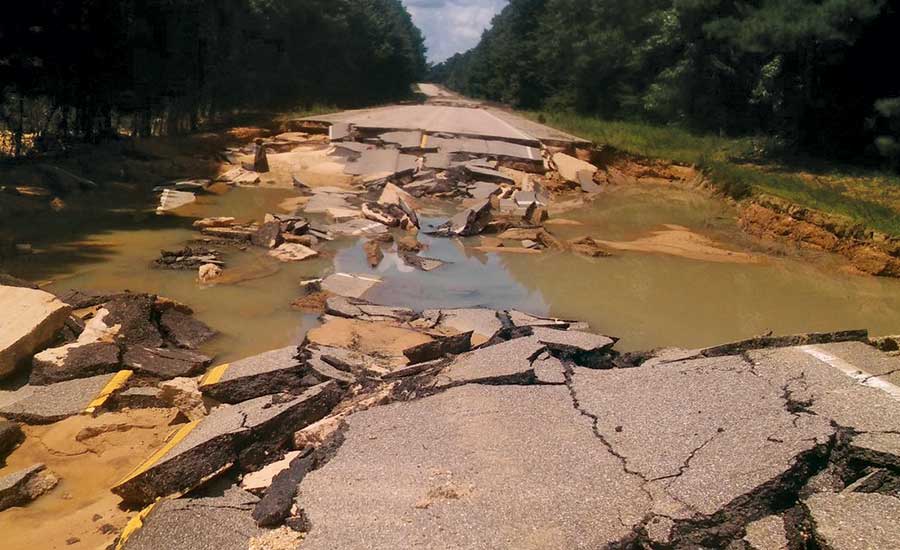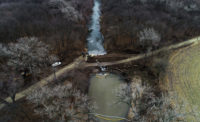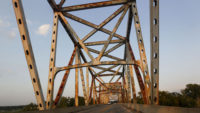As flood-battered Louisiana starts to recover from heavy August rains, housing, schools, other buildings and roads are among the hard-hit infrastructure sectors.
Dan Mobley, executive director of the American Council of Engineering Companies of Louisiana, says federal housing aid is starting to flow. But he adds, “I don’t think people understand the gravity of the situation nor the amount of devastation that we’ve had in south Louisiana right now.”
An Aug. 21 Baton Rouge Area Chamber analysis says that 41.5% of homes in the nine-parish area—as many as 110,000 structures, valued at a total $20.7 billion—are in flooded areas. So are nearly 12,000 businesses, 35% of the region’s total. Some areas got more than 30 in. of rain.
“We have a lot of schools that went underwater—some of them only had a few inches, some of them had five or six feet,” Mobley says. Churches, courthouses and other government buildings also were flooded, he adds.
The analysis says about 1,000 sq miles flooded, but only 15% of homeowners in that area have flood insurance.
While Reuters reported on Aug. 19 that one major ExxonMobil refinery in Baton Rouge was operating at 60% of capacity, Greg Bowser, Louisiana Chemical Association senior vice president, damage to members’ facilities was not significant because most are on the Mississippi River, away from the main brunt of the flooding.
Firms’ biggest concern is the impact on their employees, he said.
Federal agencies are providing assistance. The Federal Emergency Management Agency on Aug. 29 said it had distributed $385 million to individuals and families. That includes $277 million in grants to help pay for temporary rental housing, home repairs and other needs. FEMA says more than 128,000 people and households had registered for aid.
President Obama declared 20 Louisiana parishes as disaster areas, which permits residents to seek federal aid.
As of Aug. 29, local media said 5,400 home- owners with flood damage signed up for the state’s new “Shelter at Home” program, an outgrowth of 2012’s Superstorm Sandy “Rapid Repairs” program in New York. It provides eligible registrants up to $15,000 worth of free repairs to remain in their homes as they complete or assess permanent fixes.
The state on Aug. 27 tapped AECOM as program manager to provide funds to homeowners it deems eligible and to manage contractors’ work quality. Concern over repairs was voiced by homeowners during Superstorm Sandy, say media reports.
FEMA is funding at least 75% of the program cost, estimated at $200 million but likely higher.
The Federal Highway Administration on Aug. 18 made $2 million in emergency-relief funds available to Louisiana to assist with road and bridge repairs. Administrator Gregory Nadeau said the funds are “the first installment of federal resources available to Louisiana to reopen all roads.”
Estimated road damage exceeds $10 million. “Many of our roads were overtopped. And, in some areas, the water stayed on them for an extended period of time—in fact, some of them [as of Aug. 26] are still under water, ” Mobley says. That probably eroded the base of those roads, which will need repair, he adds.
The Louisiana Dept. of Transportation and Development had done more than 2,000 bridge inspections as of Aug. 25, Secretary Shawn Wilson said. A spokesman said via email that, as of Aug. 24, six bridges were out of service and awaiting emergency repairs. None was on an Interstate or major arterial. DOTD had said, on Aug. 20, that all the state’s Interstate highways were open.
Thomas Sands, a senior adviser with Dawson and Associates, says unbuilt Army Corps of Engineers’ projects may get a new look, such as a Comite diversion canal, near Baker and Zachary, La. Congress authorized the project but hasn’t appropriated funds for it.
“That would have provided some degree of protection for part of the area,” says Sands, former commander of the Corps’ Lower Mississippi Valley Division.
But, overall, he notes, “This is another situation where there is no magic wand that can be waved and—overnight—the solution for an area this large can be attained.”







Post a comment to this article
Report Abusive Comment